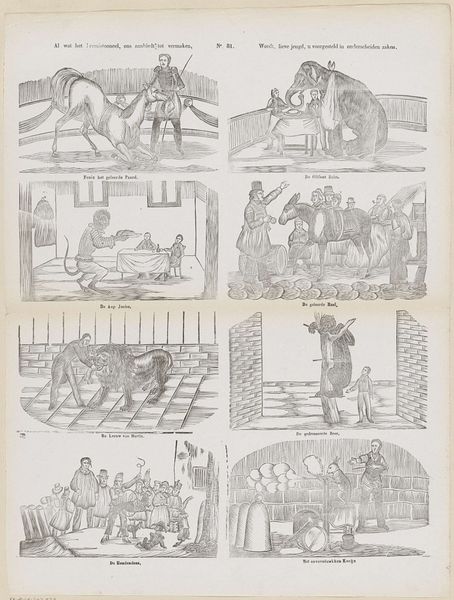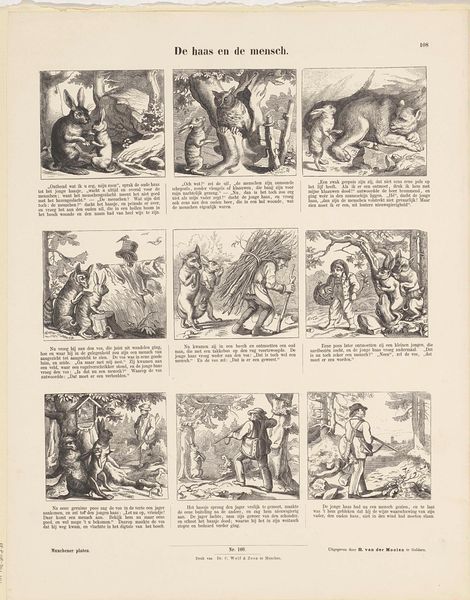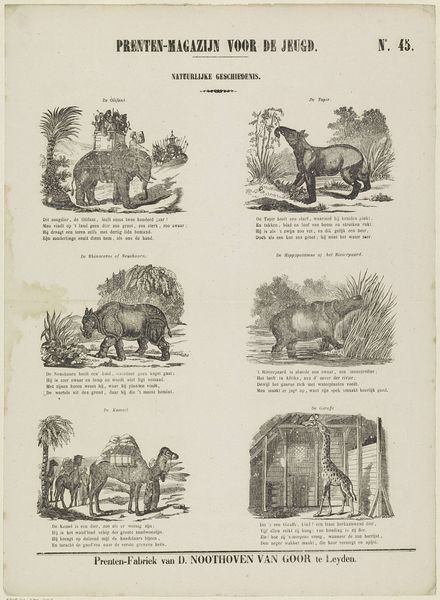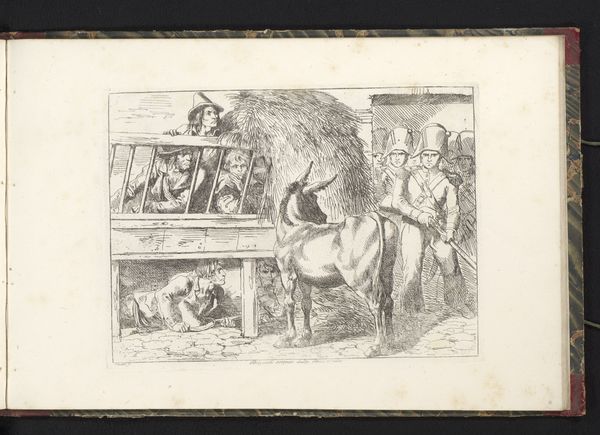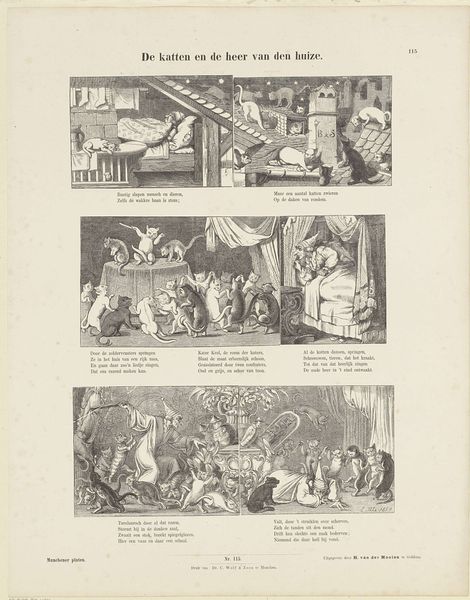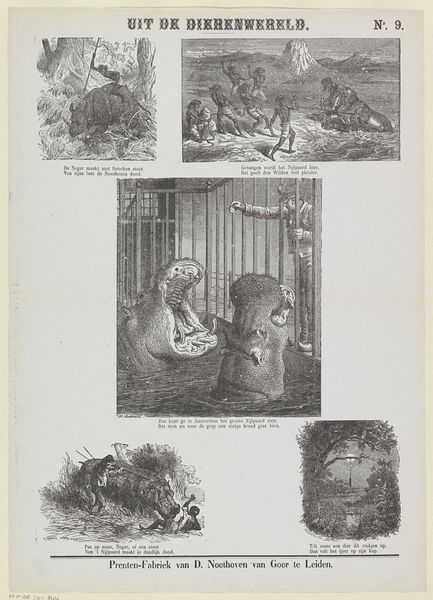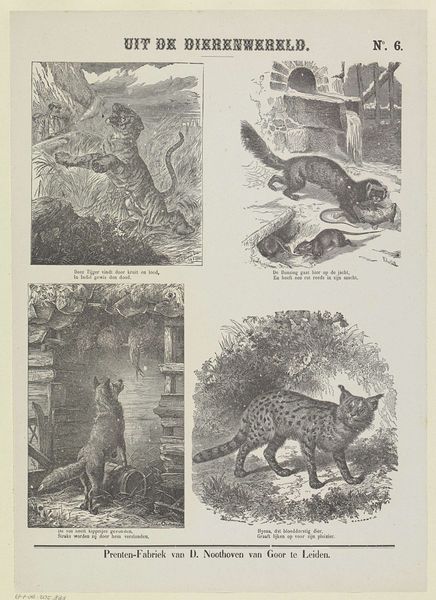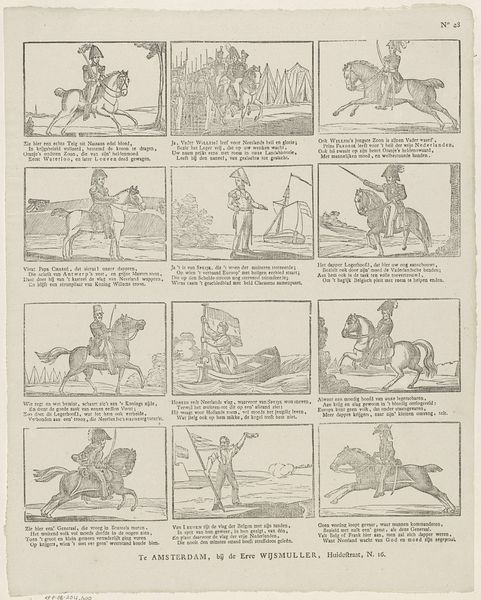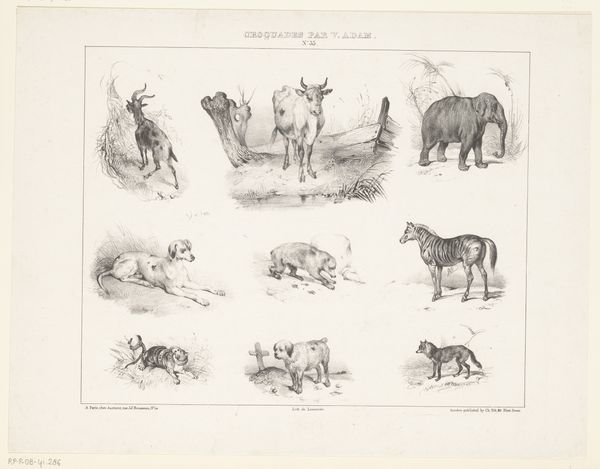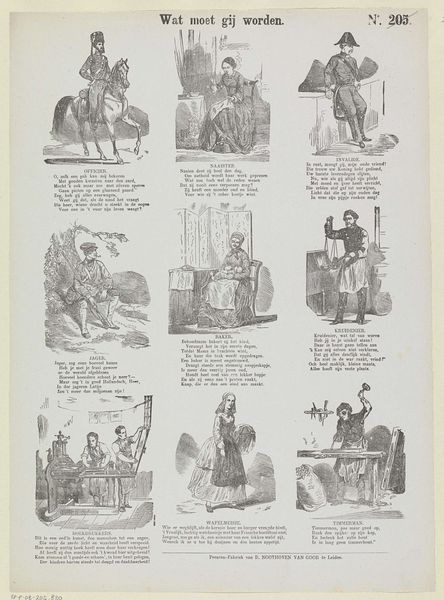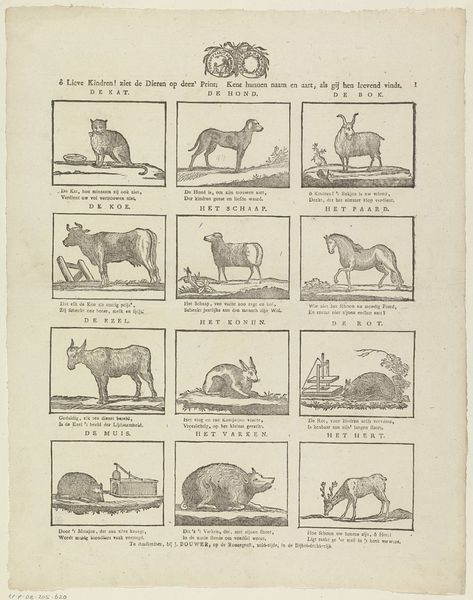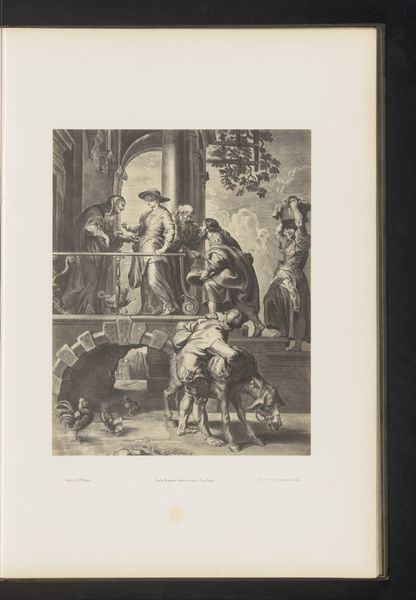
print, engraving
#
comic strip sketch
#
quirky sketch
# print
#
caricature
#
sketch book
#
personal sketchbook
#
idea generation sketch
#
sketchwork
#
pen-ink sketch
#
sketchbook drawing
#
genre-painting
#
storyboard and sketchbook work
#
sketchbook art
#
engraving
#
realism
Dimensions: height 442 mm, width 351 mm
Copyright: Rijks Museum: Open Domain
B. Fröhlich's print, *Janklaassen's groote menagerie*, presents a series of caged animals and figures, likely created in the Netherlands during a period of colonial expansion. The artwork invites reflection on themes of captivity, exoticism, and the power dynamics inherent in the display of the 'other'. The menagerie, a popular form of entertainment in the 19th century, symbolizes humanity's attempt to dominate the natural world. Here, animals like the lion and giraffe, alongside human figures are placed behind bars, evoking a sense of exploitation. The inclusion of colonized people as part of the spectacle highlights the dehumanizing aspects of imperialism. To fully grasp the meaning of this print, we must examine its cultural and historical context, researching sources on Dutch colonialism, the history of zoos and menageries, and the representation of non-European peoples in popular culture. By delving deeper into these areas, we can better understand the complex social dynamics reflected in this fascinating artwork.
Comments
No comments
Be the first to comment and join the conversation on the ultimate creative platform.

